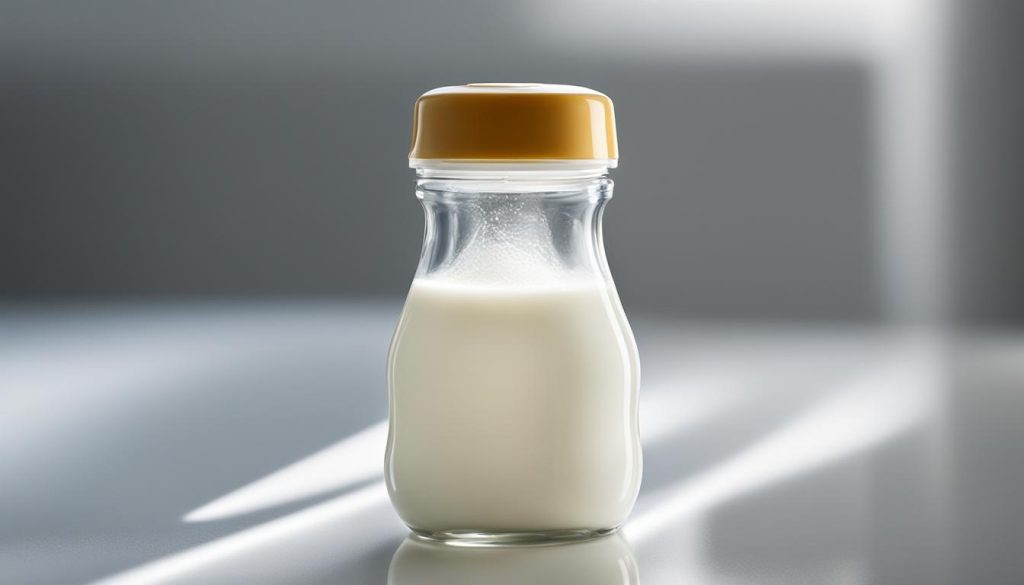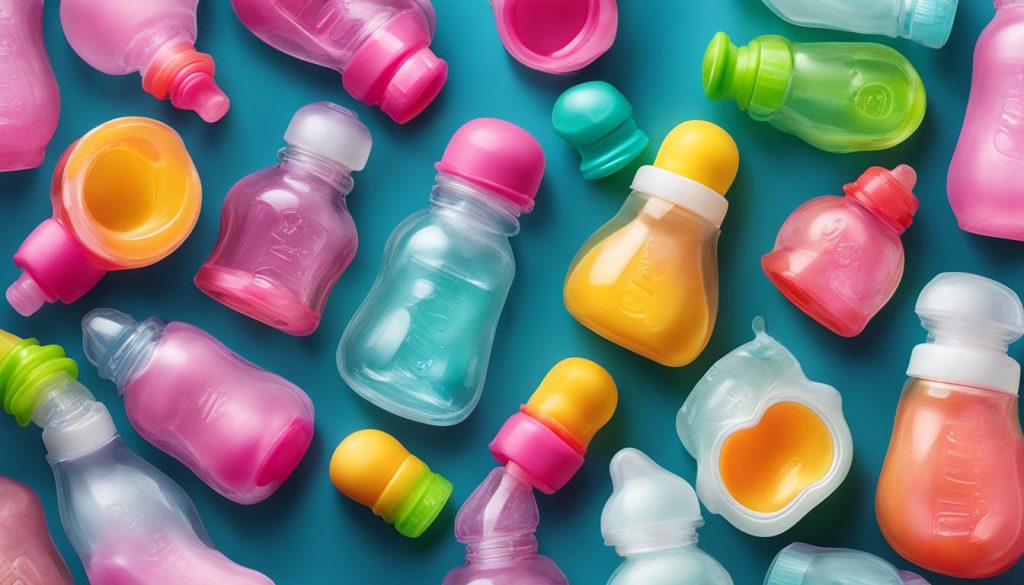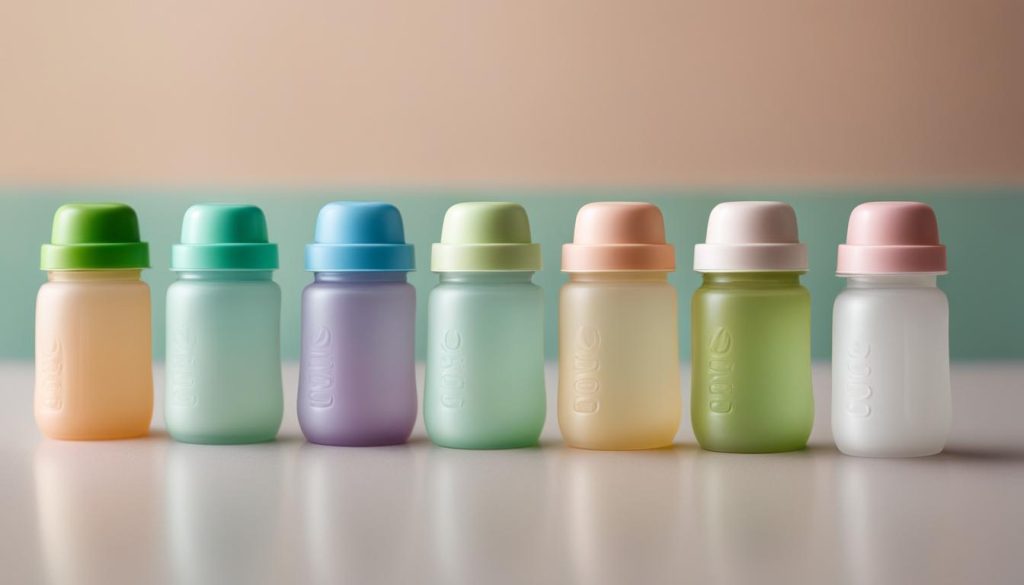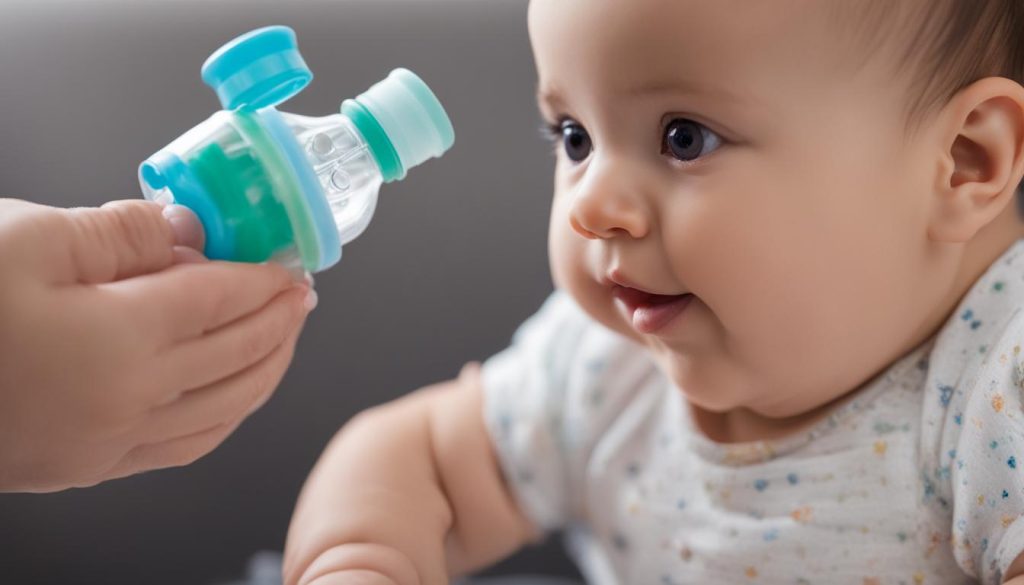When it comes to feeding your newborn, a baby bottle can play a crucial role. Whether you choose to breastfeed or formula feed, it’s important to have the right baby bottle to ensure your baby’s health and comfort. In this guide, we’ll explore the types of baby bottles available and provide tips on bottle maintenance and sterilization for new parents. We’ll also compare the different materials used in baby bottles, such as glass, plastic, and silicone. By the end of this article, you’ll have all the information you need to make an informed decision on the best baby bottle for your little one.
Types of Baby Bottles
When it comes to choosing a baby bottle for your little one, there are several types to consider. Each type has its own benefits and features that cater to different needs. Let’s take a closer look at the three main types: glass baby bottles, plastic baby bottles, and silicone baby bottles.
Glass Baby Bottles
Glass baby bottles are known for their durability and safety. They are made from high-quality, non-toxic glass that doesn’t contain harmful chemicals like BPA. Glass bottles are also eco-friendly and can be reused for multiple babies. However, they tend to be heavier and more prone to breakage, so extra caution is needed when handling them.
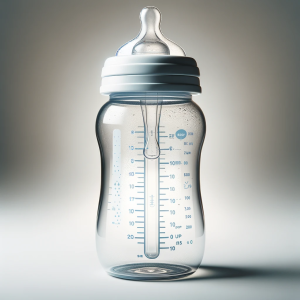
Plastic Baby Bottles
Plastic baby bottles are lightweight and affordable, making them a popular choice for many parents. It’s important to choose BPA-free plastic bottles to ensure your baby’s safety. Plastic bottles are easy to clean and come in a variety of shapes and sizes. However, they may not be as durable as glass bottles and can wear out over time.
Silicone Baby Bottles
Silicone baby bottles are a newer option on the market. They are made from soft, flexible silicone material that is easy to clean and sterilize. Silicone bottles are lightweight and unbreakable, making them ideal for travel. They are also known for their anti-colic properties, which can help reduce gas and discomfort during feeding.
| Glass Baby Bottles | Plastic Baby Bottles | Silicone Baby Bottles | |
|---|---|---|---|
| Material | High-quality glass | BPA-free plastic | Soft, flexible silicone |
| Durability | Durable, but prone to breakage | Less durable, may wear out over time | Unbreakable and long-lasting |
| Safety | Non-toxic, free from harmful chemicals | Choose BPA-free options | Safe and easy to clean |
| Cleaning | Require careful handling and washing | Easy to clean and dishwasher safe | Easy to clean and sterilize |
| Cost | Generally more expensive | Affordable | Mid-range price |
Ultimately, the type of baby bottle you choose will depend on your personal preferences and your baby’s needs. Consider factors such as durability, safety, ease of cleaning, and cost when making your decision. It’s also a good idea to consult with your pediatrician for any specific recommendations based on your baby’s individual needs.
Importance of Infant Feeding
Infant feeding is a topic of paramount importance when it comes to the care and development of your baby. Choosing the right baby bottle plays a significant role in ensuring that your little one receives the necessary nutrition while promoting their overall health and well-being.
One of the key benefits of using a baby bottle is that it provides a convenient and practical way to feed your baby, whether you are breastfeeding or formula feeding. It allows you to monitor the amount of milk or formula your baby consumes, which can be particularly reassuring for parents who want to ensure their baby’s intake is adequate.
Bottle feeding also helps establish a feeding routine that is predictable for both parents and baby. This routine can be valuable in creating a sense of stability and comfort for your baby, ultimately contributing to their overall growth and development.
Furthermore, infant feeding with a baby bottle allows other family members or caregivers to participate in the feeding process, fostering bonding and involvement within the family unit.
In conclusion, understanding the importance of infant feeding and choosing the right baby bottle are essential aspects of your parenting journey. By prioritizing your baby’s nutrition and comfort, you can provide them with the best possible start in life.
Comparing Materials Used in Baby Bottles
When choosing a baby bottle for your little one, it’s important to consider the materials used. Each material has its own advantages and considerations. Let’s compare the three main types of baby bottle materials: glass, plastic, and silicone.
Glass Baby Bottles
Glass baby bottles are a popular choice for parents who prioritize safety and durability. They are made from high-quality, non-toxic glass that does not contain any harmful chemicals. Glass bottles are also easy to clean and sterilize. However, they tend to be heavier and can be more prone to breakage compared to other materials.
Plastic Baby Bottles
Plastic baby bottles are lightweight and affordable. When choosing plastic bottles, it’s important to ensure they are BPA-free, as BPA is a chemical that can potentially seep into the liquid and be harmful to your baby’s health. BPA-free plastic bottles are safe to use and convenient for on-the-go feeding. However, plastic bottles may not be as durable and may need to be replaced more frequently.
Silicone Baby Bottles
Silicone baby bottles are made from a soft and flexible material that is easy to clean. They are lightweight and unbreakable, making them a great option for active babies and travel. Silicone bottles are also free from harmful chemicals like BPA. They are a popular choice for parents who want a versatile and long-lasting bottle. However, some babies may not like the texture of the silicone nipple compared to other materials.
| Material | Advantages | Considerations |
|---|---|---|
| Glass | Durable, non-toxic, easy to clean | Heavier, more prone to breakage |
| Plastic | Lightweight, affordable, BPA-free options | Less durable, may need frequent replacement |
| Silicone | Soft, flexible, easy to clean, unbreakable | Some babies may not like the texture of the nipple |
In conclusion, when choosing a baby bottle, consider factors such as safety, durability, and convenience. Glass baby bottles are a safe option, but they can be heavier and more fragile. Plastic bottles are lightweight and affordable, but make sure they are BPA-free. Silicone bottles are soft, flexible, and easy to clean, but some babies may not like the texture. Ultimately, the best choice will depend on your baby’s preferences and your individual needs as a parent.
Different Nipple Types
Choosing the right nipple for your baby bottle is essential for their feeding experience and overall comfort. The nipple shape and design can have a significant impact on how easily your baby can latch and feed. Two popular nipple types to consider are wide-neck baby bottles and anti-colic baby bottles.
Wide-Neck Baby Bottles
Wide-neck baby bottles have a wider nipple base that closely mimics the shape of a breast. This design makes them an excellent option for breastfed babies who are transitioning to bottle feeding. The wider base allows babies to achieve a more natural latch, promoting a smoother transition between breastfeeding and bottle feeding. It can also be easier for parents to clean and assemble wide-neck nipples due to their wider opening.
Anti-Colic Baby Bottles
Colic can be a common issue among newborns, causing discomfort and fussiness. Anti-colic baby bottles are designed to reduce the amount of air your baby swallows during feeding, helping to minimize colic symptoms. These bottles often feature specialized venting systems or unique nipple shapes that help prevent the intake of excess air. By choosing an anti-colic baby bottle, you can help alleviate your baby’s discomfort and create a more enjoyable feeding experience for both of you.
When selecting a nipple type, it’s important to consider your baby’s age, feeding habits, and personal preferences. Some babies may prefer one nipple type over the other, so it may require some trial and error to find the best fit for your little one. Additionally, ensure that you regularly inspect and replace nipples as needed, as they can wear out over time and affect your baby’s feeding experience. By choosing the right nipple type, you can foster a comfortable and satisfying feeding journey for your baby.
| Nipple Type | Key Features |
|---|---|
| Wide-Neck Baby Bottles |
|
| Anti-Colic Baby Bottles |
|
Tips for Bottle Maintenance and Sterilization
Proper bottle maintenance and sterilization are crucial for keeping your baby healthy and safe. By following these tips, you can ensure that your baby’s feeding equipment is clean and free from harmful bacteria:
- After each use, disassemble the bottle and rinse all parts with warm water to remove any leftover milk or formula.
- Use a bottle brush and mild soap to thoroughly clean the bottle, nipple, and any other accessories. Pay special attention to any crevices or hard-to-reach areas where bacteria can hide.
- If your bottles are dishwasher-safe, place them on the top rack of the dishwasher for a thorough clean. However, always check the manufacturer’s instructions to ensure that the bottles can withstand high temperatures.
- For newborns, it is recommended to sterilize their bottles before each use. There are several methods for sterilization:
Boiling
Place the disassembled bottles and nipples in a large pot, making sure they are fully submerged in water. Bring the water to a boil and let it continue boiling for at least 5 minutes. Then carefully remove the bottles and nipples using tongs and allow them to air dry on a clean surface.
Microwave Sterilizer
If you have a microwave sterilizer, follow the manufacturer’s instructions for proper use. Typically, you will need to add water to the sterilizer and place the bottles and nipples inside. Microwave the sterilizer for the recommended time and allow the bottles to cool before removing them.
Steam Sterilizer
A steam sterilizer is a convenient option for sterilizing bottles. Simply add water to the sterilizer, place the bottles and nipples inside, and turn it on. The sterilizer will generate steam to kill any bacteria. Once the cycle is complete, carefully remove the bottles and allow them to cool before use.
By implementing these proper maintenance and sterilization practices, you can provide your baby with a clean and safe feeding environment. Remember to always follow the manufacturer’s instructions and consult with your pediatrician if you have any concerns.
| Sterilization Method | Pros | Cons |
|---|---|---|
| Boiling | – Easily accessible and cost-effective method – Kills most bacteria and viruses |
– Requires constant supervision – May cause wear and tear on bottles over time |
| Microwave Sterilizer | – Quick and efficient – Kills bacteria and viruses effectively |
– Requires a microwave sterilizer – Can cause bottles to become hot |
| Steam Sterilizer | – Convenient and easy to use – Kills bacteria and viruses effectively |
– Requires a steam sterilizer – Can be more expensive than other methods |
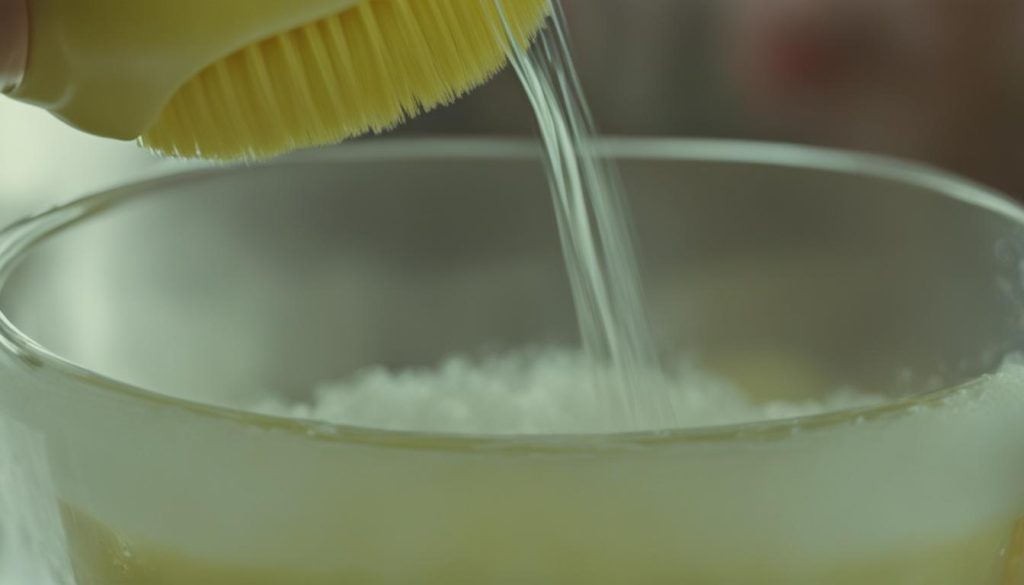
Conclusion
After exploring the types of baby bottles available, the importance of infant feeding, and comparing the materials used in baby bottles, you are now equipped with the knowledge to choose the best baby bottle for your little one. It’s crucial to consider factors such as your baby’s needs, your preferences, and the safety and ease of use of the bottle.
Remember to also pay attention to the nipple type, as it can greatly impact your baby’s feeding experience. Whether you opt for a wide-neck bottle or an anti-colic bottle, choose a nipple that suits your baby’s age and preferences to ensure a comfortable and efficient feeding session.
Proper bottle maintenance and sterilization are essential for your baby’s health and safety. By following the manufacturer’s instructions, cleaning the bottles and nipples thoroughly after each use, and sterilizing them regularly, you can prevent the growth of harmful bacteria and ensure a hygienic feeding environment.
With this comprehensive baby bottle guide and the tips provided, you can confidently make the best choice for your baby’s feeding needs. Prioritizing their comfort, health, and well-being will ensure a positive feeding experience for both you and your little one.
FAQ
What type of baby bottle is best for my baby?
The best baby bottle for your baby depends on your preferences and your baby’s needs. Glass bottles are durable and free from harmful chemicals, plastic bottles are lightweight and more affordable (make sure they are BPA-free), and silicone bottles are soft, flexible, and easy to clean.
Why should I use a baby bottle?
Baby bottles provide a convenient and practical way to ensure your baby receives the necessary nutrition. Whether you are breastfeeding or formula feeding, using a baby bottle allows you to monitor the amount of milk or formula your baby consumes and establish a feeding routine that is predictable for both parents and baby.
What are the different materials used in baby bottles?
Baby bottles are made from different materials such as glass, plastic, and silicone. Glass bottles are non-toxic and free from harmful chemicals. Plastic bottles are lightweight and more affordable (choose BPA-free options). Silicone bottles are soft, durable, and easy to clean.
What is the importance of the nipple on a baby bottle?
The nipple of a baby bottle can affect your baby’s feeding experience. Wide-neck bottles have a wider nipple base that mimics the shape of a breast, making them a good option for breastfed babies transitioning to bottle feeding. Anti-colic bottles are designed to reduce the amount of air your baby swallows during feeding, which can help prevent colic and discomfort.
How should I maintain and sterilize my baby bottles?
It’s important to clean your baby’s bottles and nipples thoroughly after each use to prevent the growth of bacteria. You can use a bottle brush and mild soap or a dishwasher to clean the bottles. Sterilization is recommended, especially for newborns, and can be done through boiling, using a microwave sterilizer, or using a steam sterilizer. Follow the manufacturer’s instructions for proper sterilization.

